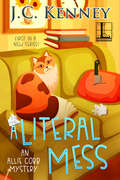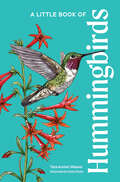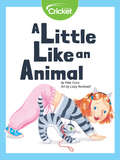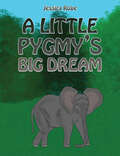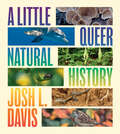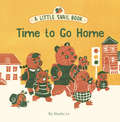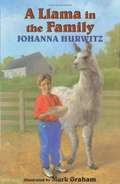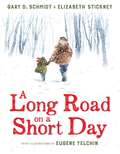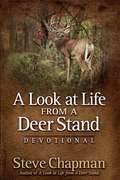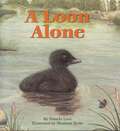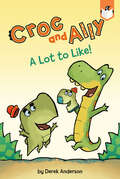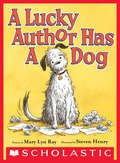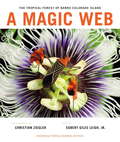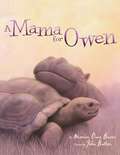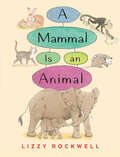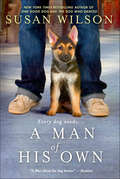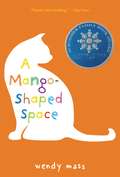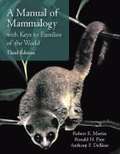- Table View
- List View
A Literal Mess (An Allie Cobb Mystery #1)
by J.C. KenneyA New York City literary agent returns to her Indiana hometown for a funeral only to get pulled into a murder investigation in this series opener.Allie Cobb left home for the literary circles of Manhattan to make her name out from under the shadow of her legendary father. Now his death brings her and her rescue cat Ursula back to the southern Indiana town of Rushing Creek, population: 3,216. But a tragic new chapter hits the presses when the body of her father&’s hard-drinking, #1 bestselling client is found under the historic town bridge. The local police suspect foul play, and their prime candidate for murder is the author&’s daughter—Allie&’s longtime friend.Determined to clear her bestie, Allie goes into fact-checking amateur detective mode while trying to ignore the usual rumormongers. Those with means, motive, and opportunity include the vic&’s ex-wife, his rejected girlfriend, the mayor, and a rival agent trying to mooch clients. With a rugged genealogist distracting her and the imminent Fall Festival about to send tourists descending on their once-peaceful hamlet, Allie needs to stay alive long enough to get a read on a killer ready to close the book on a new victim: Allie . . .Praise for A Literal Mess: &“A lovely, entertaining read. I&’m looking forward to the next book in the series already.&” —Rhoda Baxter, author of Snowed In
A Literary Cat for Every Day of the Year: Crafty companions and mewling muses – the finest felines in literature
by Tara RichardsonA literary treasure trove of poems, stories and quotes for cat lovers.
A Literary Cat for Every Day of the Year: Crafty companions and mewling muses – the finest felines in literature
by Tara Richardson"If animals could speak, the dog would be a blundering outspoken fellow; but the cat would have the rare grace of never saying a word too much." ― Mark TwainFrom Six Dinner Sid and T.S. Eliot's rebellious Rum Tum Tugger to the infuriating Cheshire Cat of Wonderland and Behemoth the Cat, the demonic shapeshifter of Bulgakov's The Master and Margarita, A Literary Cat for Every Day of the Year draws together quotes and passages from poems and stories in celebration of the most famous cats in literature.A must-have for all cat-lovers and book lovers, this inspirational collection - with beautiful vintage line illustrations - is the perfect gift for feline fans to treasure all year long.
A Little Book of Hummingbirds
by Tara Austen WeaverThis bestselling journey into the world of the hummingbird is a treasure and a gift for birdwatchers, gardeners, and anyone who loves these amazing little creatures. Lavishly illustrated with 45+ original ink-and-watercolor illustrations of the species most commonly found in the US and Canada.Hummingbirds are beautiful and mesmerizing. Did you know they can flick their tongue twelve times a second? Or that they &“tile&” their nests with pieces of lichen and moss (the nests themselves are spun from spiderwebs and thistledown)? Or that some species sing and dance as they woo their mates? Perhaps it&’s no surprise that hummingbirds elicit such enthusiasm from those who love them. This small-format hardcover book includes:45 lifelike ink-and-watercolor drawings showcasing all the species commonly found in the US and Canada, as well as the most frequent visitors—often depicted with their favorite flowers. Includes all males and many females.Fascinating facts on cultural history, folklore, migration patterns, habitat, lifecycle, biology, and anatomyInformation on creating your own hummingbird haven using feeders, flowers, water, and shelterBirdwatching tips and best places to visit to see hummingbirdsThis book is part of the collectible mini book series Little Book of Natural Wonders, and makes a gorgeous gift (or irresistible treat for yourself) for all hummingbird lovers!
A Little Like an Animal
by Pete CocoAnimals move in all sorts of fun ways! Can you crouch like a bullfrog or arch your back like a cat? Learn new ways to move your body and mimic your favorite animals!
A Little Pygmy's Big Dream
by Jessica RobeIt’s not easy being the smallest elephant in the herd, especially when you have the biggest dream! In the heart of the Amazon Rainforest, there lives a tiny pygmy elephant who longs to leave the forest floor and see the world from up high. In pursuit of his dream, he seeks advice from an orangutan, a black-banded squirrel, and a toucan. Each one of them laugh at his efforts, dismissing his dream. But he doesn’t give up hope! Look inside this narrative poem to see just what happens when this little elephant follows his dream, and eventually realizes he always had the ability to achieve his dreams all on his own, just the way he is.
A Little Queer Natural History
by Josh L. DavisBeautifully illustrated and scientifically informed, a celebration of the astonishing diversity of sexual behavior and biology found in nature. From a pair of male swans raising young to splitgill mushrooms with over 23,000 mating types, sex in the natural world is wonderfully diverse. Josh L. Davis considers how, for many different organisms—animals, plants, and fungi included—sexual reproduction and sex determination rely on a surprisingly complex interaction among genes, hormones, environment, and chance. As Davis introduces us to fascinating biological concepts like parthenogenesis (virgin birth), monoecious plants (individuals with separate male and female flowers), and sex-reversed genitals, we see turtle hatchlings whose sex is determined by egg temperature; butterflies that embody male and female biological tissue in the same organism; and a tomato that can reproduce three different ways at the same time. Davis also reveals animal and plant behaviors in nature that researchers have historically covered up or explained away, like queer sex among Adélie penguins or bottlenose dolphins, and presents animal behaviors that challenge us to rethink our assumptions and prejudices. Featuring fabulous sex-fluid fishes and ant, wasp, and bee queens who can choose both how they want to have sex and the sex of their offspring, A Little Queer Natural History offers a larger lesson: that the diversity we see in our own species needs no justification and represents just a fraction of what exists in the natural world.
A Little Snail Book: Time to Go Home
by Shasha LvWelcome to the whimsical world of Little Snail and friends!Time to Go Home celebrates the different routes and routines each friend undertakes on their way home from school—with a playful twist at the end.Animals of all shapes and sizes abound in this sweet, feel-good board book infused with friendship and fun.• Themes of school and travel help the youngest of readers better understand the world around them.• Features bright, unique illustrations and bold, beautiful colors• Teeming with cute animal characters to make your little one giggleLittle Snail serves up a delightful surprise, proving that the smallest of creatures can be special indeed.This charming book delivers delight with wit, humor, and ample sweet and silly moments.• Ideal for children ages 0 to 3 years old• A great pick for preschool and kindergarten teachers looking for a crowd-pleasing picture book for little students• Perfect for parents, grandparents, and caregivers• You'll love this book if you love books like Franklin Goes to School by Paulette Bourgeois; Preschool, Here I Come! by David J Steinberg; and Daniel Goes to School by Becky Friedman.
A Llama Is Not an Alpaca: And Other Mistaken Animal Identities
by Karen JamesonCombining scientific facts with the art of poetry, this is a humorous and educational picture book about animals that look alike. How do you tell a llama from an alpaca, an alligator from a crocodile, or a dolphin from a porpoise? The animal kingdom is full of creatures that look so similar to others that they are often confused for each other. A Llama Is Not an Alpaca pairs rhyming animal riddles with factual responses to both teach and engage young readers as they compare and contrast features of commonly misidentified animals. How many will you get right?!
A Llama in the Family
by Johanna HurwitzBecause Adam hopes that the "big surprise" awaiting him at home has two wheels and pedals, he is unprepared for the unusual addition to his Vermont family.
A Log's Life
by Wendy PfefferOne stormy day a strong wind rages through the forest, causing an old oak tree to bend and sway. Lightning strikes; the tree crashes to the ground. Now it's a giant log.
A Long Road on a Short Day
by Gary D. Schmidt Elizabeth StickneyA tender story of a father-son adventure with themes of community and kindness, in short chapters with vivid full-color illustrations, by bestseller and Newbery Honor winner Gary D. Schmidt and acclaimed artist Eugene Yelchin.In a story of perseverance and determination told with warmth and sparkling with humor, a short winter day finds Samuel and Papa walking a long road on Samuel's first trading trip. Meeting strangers, practicing good manners, and proud to be in Papa's company, Samuel watches and learns as Papa trades up from almost nothing to the milk cow Mama is yearning for. Simple text combines with vivid illustrations for a satisfying tale that will resonate with readers who enjoy an adventure with dad.
A Look At Life From A Deer Stand Devotional
by Steve ChapmanSteve Chapman, avid hunter and bestselling author of A Look at Life from a Deer Stand (more than 300,000 copies sold), has a gift for gleaning faith lessons from the glories of creation. This pocket-sized gathering of devotions, handsomely bound in a soft, suede-like cover, invites readers to join in the thrill of the pursuit, the celebration of nature, and the enjoyment of God's presence. Each devotion begins with the inspiration of a Scripture verse and closes with the stillness of a prayer. Readers will be excited by the application of biblical wisdom, delighted by the humor, caught up in the adventure of hunting, and intrigued by the exploration of God's character. An ideal gift for Steve Chapman fans, hunters, outdoor enthusiasts, and anyone who wants to take aim at spiritual growth.
A Loon Alone
by Pamela LoveA tranquil pond becomes a frightening place for a loon chick that is separated from his parents by a menacing snapping turtle. But the brave little bird remains in his hiding place and also survives encounters with a huge moose, a hungry raccoon, and a speedy otter. In the end, he is reunited with his mother and father just as night falls.
A Lot to Like! (Croc and Ally)
by Derek AndersonFor fans of Elephant & Piggie and Frog & Toad comes an easy-to-read series about another unlikely pair: Croc and Ally. These two best friends don't always see things the same way, but there's one thing they do agree on--their friendship comes first!Croc is grumpy. Ally is happy. Croc sees a problem. Ally finds a solution. In A Lot to Like!, the best friends discuss their favorite color, shape, and number. Then they try to find a new favorite food for Ally, who prefers pancakes above all else. Finally, Ally introduces Croc to his new friend, a sock puppet named Little Croc.With three short stories, easy-to-read vocabulary, and adorable illustrations, this book is perfect for progressing readers.
A Love Affair with Birds: The Life of Thomas Sadler Roberts
by Sue LeafThe father of Minnesota ornithology, whose life story opens a window on a lost world of nature and conservation in the state&’s early days Imagine a Minneapolis so small that, on calm days, the roar of St. Anthony Falls could be heard in town, a time when passenger pigeons roosted in neighborhood oak trees. Now picture a dapper professor conducting his ornithology class (the university&’s first) by streetcar to Lake Harriet for a morning of bird-watching. The students were mostly young women—in sunhats, sailor tops, and long skirts, with binoculars strung around their necks. The professor was Thomas Sadler Roberts (1858–1946), a doctor for three decades, a bird lover virtually from birth, the father of Minnesota ornithology, and the man who, perhaps more than any other, promoted the study of the state&’s natural history. A Love Affair with Birds is the first full biography of this key figure in Minnesota&’s past.Roberts came to Minnesota as a boy and began keeping detailed accounts of Minneapolis&’s birds. These journals, which became the basis for his landmark work The Birds of Minnesota, also inform this book, affording a view of the state&’s rich avian life in its early days—and of a young man whose passion for birds and practice of medicine in a young Minneapolis eventually dovetailed in his launching of the beloved Bell Museum of Natural History.Bird enthusiast, doctor, author, curator, educator, conservationist: every chapter in Roberts&’s life is also a chapter in the state&’s history, and in his story acclaimed author Sue Leaf—an avid bird enthusiast and nature lover herself—captures a true Minnesota character and his time.
A Lucky Author Has a Dog
by Mary Lyn RayFor every aspiring young author out there, this story of a lucky author (and, of course, her dog!) offers both answers and inspiration!Ever wonder what it's like to be an author?Does she write in a quiet corner somewhere? Or someplace loud and busy? Does she have ideas forty times a day? Or does she sometimes get stuck? And how does her dog make her lucky?New York Times bestselling author Mary Lyn Ray, together with illustrations from Steven Henry (Ella the Elegant Elephant) that are chock full of hidden jokes, answers these questions and more in a story of one writer, her furry friend, and a school visit that brings authors young and old (and dogs!) together.
A Lucky Day for Little Dinosaur (Into Reading, Level F #31)
by Hugh Price Ben SpibyNIMAC-sourced textbook
A Magic Web
by Christian Ziegler Egbert Giles LeighThe tropical forest of Panama's Barro Colorado Island is a luxuriant community of plants and animals, pulsating with life and offering an astonishing view of nature's myriad processes. What does the forest look like? How do the activities of the forest's plants and animals create a community?In A Magic Web, photographer Christian Ziegler and evolutionary biologist Egbert Giles Leigh, Jr., invite readers to enter the marvelous world of Barro Colorado Island. This book is a unique combination of spectacular photography and clear, authoritative text written by an active scientist who has spent half a lifetime trying to understand the tropical forest. Luscious photographs of the forest reveal the wonderful diversity of its inhabitants and show many of the activities that give it its character and lend structure to its community. Drawing on decades of work on Barro Colorado Island, Egbert Leigh explains how the forest works: how plants and animals compete with but also depend on each other; how the solitary lives of cats contrast with the intricately organized lives of armies of ants; the variety of ways plants struggle for a place in the sun; and how these plants attract animals to pollenate their flowers. Finally, the book shows the importance of tropical forests to the people living near them, why they matter to the world at large, what we can learn from them, and how they differ from temperate-zone forests.Full of stunning full-color photographs accompanied by clear and accessible text, A Magic Web is a must for anyone planning to visit a tropical forest and for all those who wish they could.
A Mama for Owen
by Marion Dane Bauer John ButlerOwen the baby hippo and his mama were best friends. They loved to play hide-and-seek on the banks of the Sabaki River in Africa. That was all before the tsunami came and washed Owen's world away. But after the rain stops, Owen befriends Mzee, a grayish brown tortoise. He plays with him, snuggles with him, and decides he just might turn out to be his best friend and a brand-new mama. Inspired by the tsunami of 2004, acclaimed storyteller Marion Dane Bauer and celebrated illustrator John Butler depict this heartwarming true tale of healing, adoption, and rebirth -- with splendid illustrations and oodles of love.
A Mammal is an Animal
by Lizzy RockwellWhat is a mammal? And what is not a mammal? Mammals have skeletons as deer have, breathe air in lungs as whales do, and are born alive as are calves. What is not a mammal? A ladybug has no skeleton, a fish breathes through gills and a bird hatches from an egg. Monkeys, dolphins, and elephants are mammals—and so are you and I! With clear, simple language, beautiful paintings, a chart, diagrams, and a cutaway, acclaimed author-illustrator Lizzy Rockwell has created a beautiful and informative book that introduces young children to animal classification and dichotomous inquiry.
A Man for All Species: The Remarkable Adventures of an Animal Lover and Expert Pet Keeper
by Nancy Ellis-Bell Marc MorroneIn A Man for All Species, animal expert Marc Morrone weaves thrilling, inspiring, strange, and often hilarious experiences with practical advice gleaned over his forty-year career, revealing a world of adventure and anguish, humor and heart, that every pet owner and animal lover will recognize.
A Man of His Own
by Susan Wilson“[A] War Horse for dog lovers,” a novel of two soldiers bonded by a military dog and who love for the same woman—from a New York Times–bestselling author (Booklist).Rick Stanton was a promising professional baseball player with dreams of playing in the major leagues and starting a family with his young wife, Francesca, when World War II changed everything. Rick returns from the war with his body broken and his dreams shattered. But it was not just body and spirit he sacrificed for the war. He and Francesca volunteered their beloved dog, Pax, for the Army’s K-9 Corp, not knowing if they’d ever see him again.Keller Nicholson is the soldier who fought the war with Pax by his side, and the two have the kind of profound bond that can only be forged in war. Pax is the closest Keller has to a sense of family, and he can’t bear the thought of returning him to the Stantons. But Rick and Francesca refuse to give him up. Instead, an arrangement is made: Keller will work as Rick’s live-in aide. And thus an unlikely family is formed, with steadfast Pax at the center. As they try to build a new life out of the ashes, Keller and Francesca struggle to ignore their growing attraction to each other, and Rick, believing that he can no longer give Francesca what she needs and wants, quietly plans a way out.All three of them need healing. All three of them are lost. And in Susan Wilson’s A Man of His Own, Pax, with his unconditional love and unwavering loyalty, may be the only one who can guide them home.
A Mango-Shaped Space (Little Brown Novels)
by Wendy MassMia Winchell seems to be a typical teenager, but shes keeping a huge secret from everyone who knows her: sounds, numbers, and words appear in color for her. Mia has synesthesia, the mingling of perceptions whereby a person can see sounds, smell colors, or taste shapes. When trouble in school forces Mia to reveal her condition, her friends and family cant relate to her, and she must look to herself to develop an understanding and appreciation for her gift. Spiced with wit and humor, A Mango-Shaped Space is a poignant coming-of-age novel that will intrigue readers long after they've turned the last page. Praised by reviewers and award-winning authors alike, A Mango-Shaped Space has brought renewed attention to the fascinating world of synesthesia, which includes famous artists such as Vincent Van Gogh and Serge Rachmaninoff.
A Manual Of Mammalogy: With Keys To Families Of The World
by Robert Martin Ronald Pine Anthony DeBlaseRefined in detail through three editions, the manuals outstanding features include: an explanation of keys and how to use them; the inclusion of keys designed to identify by order or family extant mammals of the world; special sections containing comments and suggestions on identification; information on working with map coordinates and global positioning receivers; coverage of the use of computer programs to get estimates of home-range size and characteristics; and ideas for locating reliable, authoritative literature on mammals. A section on techniques for studying mammals in the field and in the laboratory rounds out this student-friendly learning tool. Beautifully wrought illustrations and diagrams accurately portray visual details of mammal groups or characteristics that are unavailable to study in person. Moreover, well-designed laboratory exercises provide opportunities to apply knowledge and master understanding.
